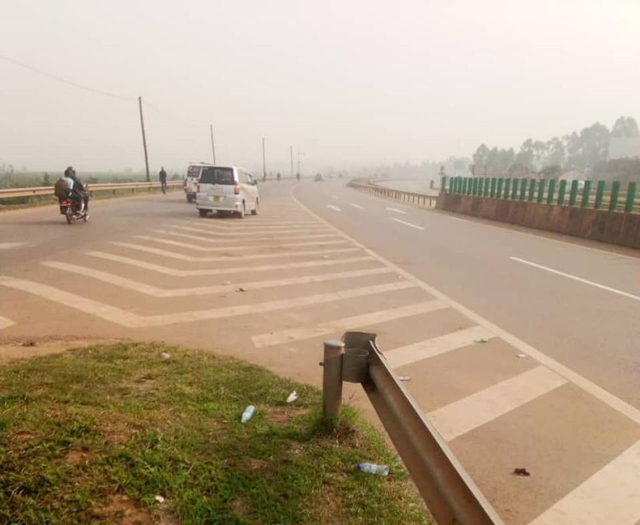
Kampala, Uganda | THE INDEPENDENT | Ugandans do not know how to use expressways, and dual carriageway, implying that it will take a lot for the country to rip the benefits of the huge investment in such infrastructure projects. Several motorists drive from points where they are not supposed to, causing significant inconvenience to other road users on the dual carriageways.
The Uganda National Roads Authority, UNRA, says this is a result of both lack of knowledge on the use of high-speed roads (highways) or expressways, or selfishness by motorists who disregard the rights and safety of others.
In Uganda, basic rules include driving on the left side of the road unless when overtaking. When driving along a single carriageway, the driver is more cautious on the lane they are driving on, aware that going onto the right side will most likely result in a collision with oncoming traffic. This is hardly possible on a dual carriageway and motorists feel safe to drive on the right (or outer) lane, which is wrong, unless when overtaking.
“It is common for slow-moving heavy trucks and other vehicles driving on the outer or right lane, but this is wrong and punishable by the law. In fact, even if you are alone on the road, in this case, the dual carriageway, you are supposed to stay on the left or innermost lane, until when overtaking”, says UNRA’s Manager for Media Relations, Allan Ssempebwa Kyobe, says.
The slow-moving vehicles on the outer lane lead to faster vehicles opting to overtake from the left, which in itself, is an offence under the traffic highway code. Areas where the traffic code is most violated on the Entebbe Expressway and the Northern Bypass are the toll-gates, where only a few motorists slowdown to the 20km per hour speed limit, despite the displayed road signs.
Others are the road marks especially where a road becomes smaller or two lanes become one or in the case of the Entebbe Expressway, where it joins the northern bypass at Busega, among others. Kyobe says that although the marks dividing the lanes are not supposed to be driven over, many motorists use them as an advantage to overtake other vehicles.
Kyobe says there is a need for traffic regulations to be strictly enforced and the penalties made harsher for drivers who knowingly break the regulations. He says that the roads have all it takes to ensure the safety of all users, including the road signage, guardrails and markings, among others, adding that traffic police have a bigger part to play now.
Traffic Police Spokesman Charles Sebambulidde says motorists are not aware of most of the traffic rules along expressways because they are still new to Ugandans. But he says even on ordinary highways, like on climbing lanes, many do not respect the ‘keep left rule’.
He says that while there is a need for sensitization campaigns, these are a function of the Ministry of Works and Transport, which he says should also make statutory instruments on how to use the high-speed roads.
Uganda got its first expressway in June 2018 when the Kampala-Entebbe Expressway was commissioned by President Yoweri Museveni and then China’s Vice Prime Minister Wang Yang. Other high-speed ways in the pipeline include the 28km Kampala-Mpigi Expressway which is planned for completion in 2023, the 77-kilometre Kampala-Jinja Expressway planned for completion in 2026 and the Kampala Northern bypass.
The projects are mainly aimed at decongesting the capital by diverting traffic from the city centre, but also giving a safe, secure and fast driving experience for the motorists. Taxi drivers along the northern bypass said there is a need for sensitization and signs that are easy to interpret.
********
URN
The post UNRA wants operation fika saalama for expressways appeared first on The Independent Uganda:.
from The Independent Uganda: https://ift.tt/3qDU8xw
0 Comments